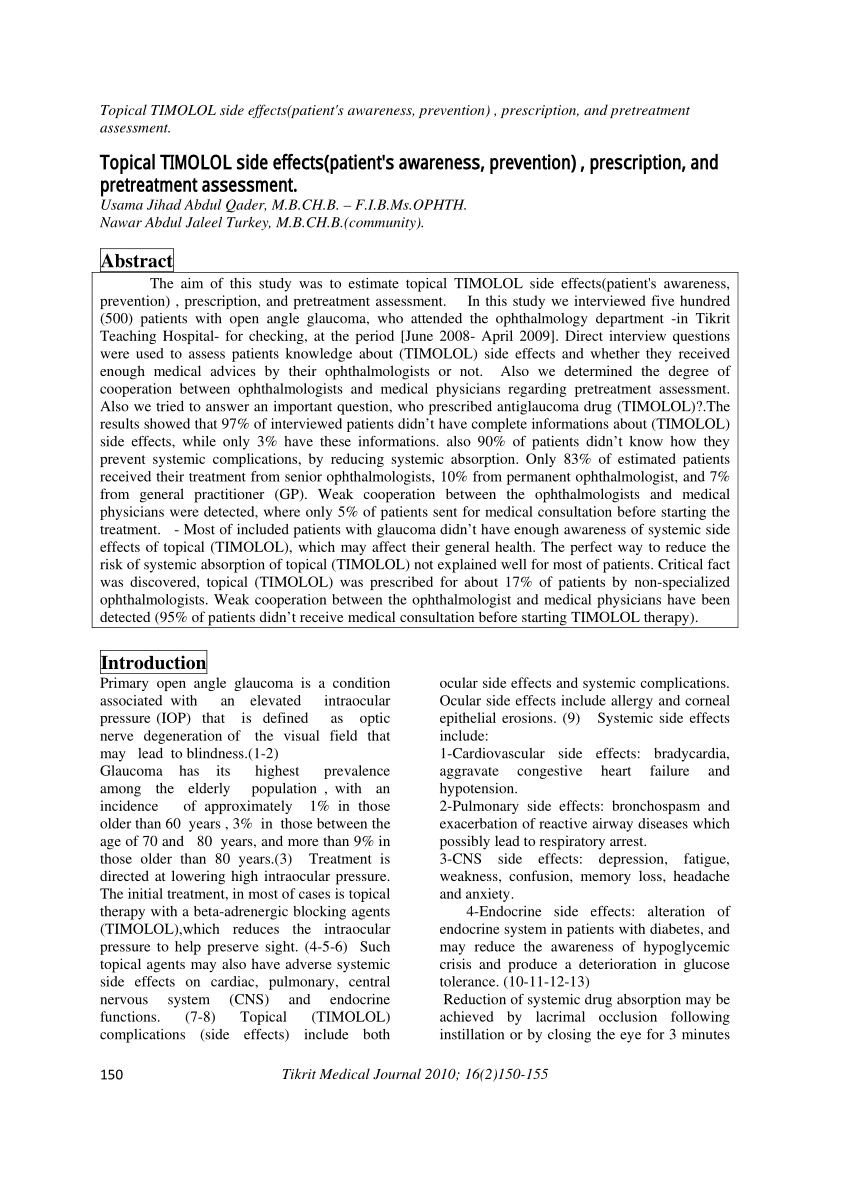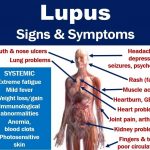
Contents
- 1 Side Effects of Timoptic (timolol)
- 1.0.1 What are the important side effects of Timoptic (timolol)?
- 1.0.2 Timoptic (timolol) side effects for healthcare professionals
- 1.0.2.1 Body As A Whole
- 1.0.2.2 Cardiovascular
- 1.0.2.3 Digestive
- 1.0.2.4 Immunologic
- 1.0.2.5 Nervous System/Psychiatric
- 1.0.2.6 Skin
- 1.0.2.7 Hypersensitivity
- 1.0.2.8 Respiratory
- 1.0.2.9 Endocrine
- 1.0.2.10 Special Senses
- 1.0.2.11 Urogenital
- 1.0.2.12 Allergic
- 1.0.2.13 Body as a Whole
- 1.0.2.14 Cardiovascular
- 1.0.2.15 Digestive
- 1.0.2.16 Hematologic
- 1.0.2.17 Endocrine
- 1.0.2.18 Skin
- 1.0.2.19 Musculoskeletal
- 1.0.2.20 Nervous System/Psychiatric
- 1.0.2.21 Respiratory
- 1.0.2.22 Urogenital
- 1.0.3 What drugs interact with Timoptic (timolol)?
- 1.0.4 Summary
Side Effects of Timoptic (timolol)
Timoptic, Timoptic-XE, Timoptic in Ocudose (timolol) is a beta-adrenergic blocking agent (beta-blocker) that blocks the action of the sympathetic (adrenergic) nervous system on the heart.
In addition to its effect on the heart, timolol reduces the pressure within the eye (intraocular pressure). This may result from a reduction in production of the liquid (aqueous humor) within the eye. The precise mechanism of this effect is unknown. The reduction in intraocular pressure reduces the risk of damage to the optic nerve and vision loss in patients with glaucoma.
Common side effects of Timoptic include:
- blurred vision,
- burning or stinging in the eye,
- irritation to the eye,
- pain or dryness in the eye.
Serious side effects of Timoptic are rare and may include those seen with oral beta-adrenergic blockers such as:
- fatigue,
- insomnia,
- nausea,
- slow heart rate,
- low blood pressure,
- cold extremities, and
- shortness of breath or wheezing.
Drug interactions of Timoptic include oral beta-adrenergic blocking agents like propranolol, atenolol, metoprolol, or carvedilol taken with Timoptic can result in additive effects and patients may experience excessively low blood pressure or reductions in heart rate. Combining calcium channel blockers with Timoptic may increase the risk of abnormal heart beats.
Although there are no human studies examining the effects of oral timolol on the fetus, animal studies have shown adverse effects. Physicians must balance the potential risks to the fetus against the potential benefits to the mother. It is unknown if the small amount of Timoptic that enters the blood after administration into the eye affects the fetus.
Concentrations of timolol in breast milk can be three times those in the mother’s blood after oral administration. It is unknown how much timolol appears in breast milk after administration into the eye. Ideally, patients taking Timoptic should avoid breastfeeding.
What are the important side effects of Timoptic (timolol)?
Common side effects include:
- blurred vision, and
- burning or stinging in the eye.
Ophthalmic timolol can cause eye irritation, which may manifest as pain or dryness in some individuals.
Rarely, timolol eye drops can result in side effects seen with other oral beta adrenergic blockers. For example, individuals can experience:
- fatigue,
- insomnia,
- nausea,
- slow heart rate,
- low blood pressure,
- cold extremities, and
- shortness of breath or wheezing.
Timoptic (timolol) side effects for healthcare professionals
The most frequently reported adverse experiences have been burning and stinging upon instillation (approximately one in eight patients).
The following additional adverse experiences have been reported less frequently with ocular administration of this or other timolol maleate formulations:
Body As A Whole
Cardiovascular
Bradycardia, arrhythmia, hypotension, hypertension, syncope, heart block, cerebral vascular accident, cerebral ischemia, cardiac failure, worsening of angina pectoris, palpitation, cardiac arrest, pulmonary edema, edema, claudication, Raynaud’s phenomenon, and cold hands and feet.
Digestive
Immunologic
Nervous System/Psychiatric
Dizziness, increase in signs and symptoms of myasthenia gravis, paresthesia, somnolence, insomnia, nightmares, behavioral changes and psychic disturbances including depression, confusion, hallucinations, anxiety, disorientation, nervousness, and memory loss.
Skin
Alopecia and psoriasiform rash or exacerbation of psoriasis.
Hypersensitivity
Signs and symptoms of systemic allergic reactions, including anaphylaxis, angioedema, urticaria, and localized and generalized rash.
Respiratory
Bronchospasm in patients with preexisting bronchospastic disease, respiratory failure, dyspnea, nasal congestion, cough, and upper respiratory infections.
Endocrine
Masked symptoms of hypoglycemia in diabetic patients.
Special Senses
Signs and symptoms of ocular irritation including conjunctivitis, blepharitis, keratitis, ocular pain, discharge (e.g., crusting), foreign body sensation, itching and tearing, and dry eyes; ptosis; decreased corneal sensitivity; cystoid macular edema; visual disturbances including refractive changes and diplopia; pseudopemphigoid; choroidal detachment following filtration surgery; and tinnitus.
Urogenital
Retroperitoneal fibrosis, decreased libido, impotence, and Peyronie’s disease.
The following additional adverse effects have been reported in clinical experience with oral timolol maleate or other oral beta-blocking agents and may be considered potential effects of ophthalmic timolol maleate:
Allergic
Erythematous rash, fever combined with aching and sore throat, laryngospasm with respiratory distress.
Body as a Whole
Extremity pain, decreased exercise tolerance, weight loss.
Cardiovascular
Worsening of arterial insufficiency, vasodilation.
Digestive
Gastrointestinal pain, hepatomegaly, vomiting, mesenteric arterial thrombosis, ischemic colitis.
Hematologic
Nonthrombocytopenic purpura, thrombocytopenic purpura, agranulocytosis.
Endocrine
Skin
Pruritus, skin irritation, increased pigmentation, sweating
Musculoskeletal
Nervous System/Psychiatric
Vertigo, local weakness, diminished concentration, reversible mental depression progressing to catatonia, an acute reversible syndrome characterized by disorientation for time and place, emotional lability, slightly clouded sensorium, and decreased performance on neuropsychometrics.
Respiratory
Rales, bronchial obstruction.
Urogenital
What drugs interact with Timoptic (timolol)?
Although Timoptic used alone has little or no effect on pupil size, mydriasis resulting from concomitant therapy with Timoptic and epinephrine has been reported occasionally.
Beta-Adrenergic Blocking Agents
Patients receiving oral beta-adrenergic blocking agents and Timoptic should be observed for potential additive effects of beta-blockade, both systemic and on intraocular pressure. The concomitant use of two topical beta-adrenergic blocking agents is not recommended.
Calcium Antagonists
Caution should be used in the coadministration of beta-adrenergic blocking agents, such as Timoptic, and oral or intravenous calcium antagonists because of possible atrioventricular conduction disturbances, left ventricular failure, and hypotension. In patients with impaired cardiac function, coadministration should be avoided.
Catecholamine-Depleting Drugs
Close observation of the patient is recommended when a beta-blocker is administered to patients receiving catecholamine-depleting drugs such as reserpine, because of possible additive effects and the production of hypotension and/or marked bradycardia, which may result in vertigo, syncope, or postural hypotension.
Digitalis And Calcium Antagonists
The concomitant use of beta-adrenergic blocking agents with digitalis and calcium antagonists may have additive effects in prolonging atrioventricular conduction time.
CYP2D6 Inhibitors
Potentiated systemic beta-blockade (e.g., decreased heart rate, depression) has been reported during combined treatment with CYP2D6 inhibitors (e.g., quinidine, SSRIs) and timolol.
Clonidine
Oral beta-adrenergic blocking agents may exacerbate the rebound hypertension that can follow the withdrawal of clonidine. There have been no reports of exacerbation of rebound hypertension with ophthalmic timolol maleate.
Injectable Epinephrine
See product packaging for more information.
Summary
Timoptic, Timoptic-XE, Timoptic in Ocudose (timolol) is a beta-adrenergic blocking agent that blocks the action of the sympathetic nervous system on the heart. Timolol also reduces intraocular pressure in patients with glaucoma. Common side effects of Timoptic include blurred vision, burning or stinging in the eye, irritation to the eye, and pain or dryness in the eye. Drug interactions of Timoptic include oral beta-adrenergic blocking agents. Although there are no human studies on the effects of oral timolol on the fetus, animal studies have shown adverse effects. Patients taking Timoptic should avoid breastfeeding.


